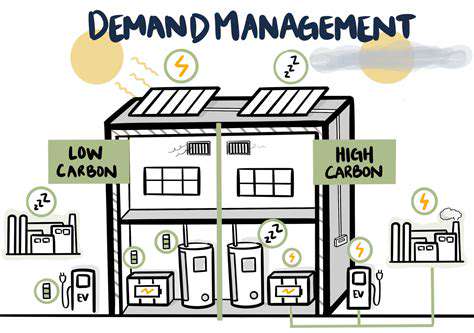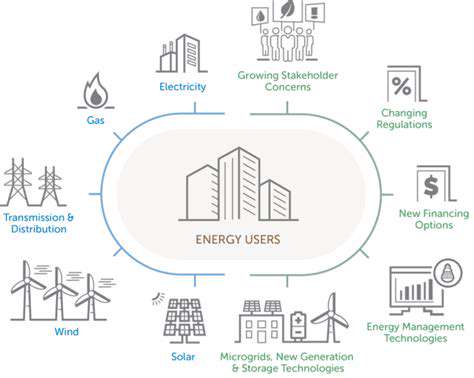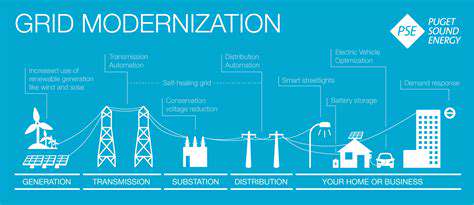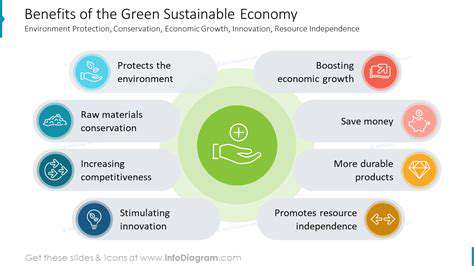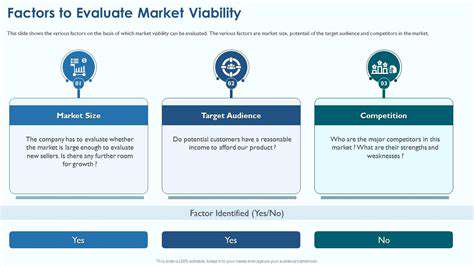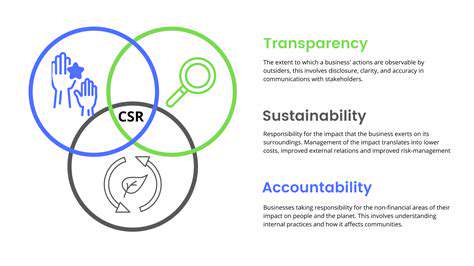Offshore Wind Turbine Foundation Innovations: Cost and Efficiency
Exploring Novel Foundation Materials and Designs
Geotechnical Considerations for Foundation Design
Designing foundations for offshore wind turbines requires careful evaluation of marine soil conditions, which vary significantly with depth. The structural integrity of these installations depends heavily on understanding soil characteristics like shear strength and compressibility. Engineers must also consider how water currents might erode sediment around the base over time, potentially compromising stability. Dynamic forces from turbine operation add another layer of complexity to these calculations.
Innovative Foundation Materials
While steel and concrete remain standard, new composite materials are changing foundation engineering. Fiber-reinforced polymers show particular promise for their combination of strength and corrosion resistance. These advanced materials could enable larger turbines in deeper waters by significantly reducing structural weight. Some projects now incorporate recycled concrete aggregates, demonstrating how sustainability goals can align with engineering requirements. This approach addresses both environmental concerns and material cost considerations.
Advanced Foundation Designs for Deep Water Deployment
Floating platform technologies represent a breakthrough for deepwater installations. Unlike fixed foundations, these buoyant structures can accommodate variable seabed conditions while maintaining stability. Their adaptable nature helps turbines withstand shifting wave patterns and strong currents, opening new areas for wind farm development.
Dynamic Load Analysis and Modeling
Computer simulations play a crucial role in predicting how foundations will perform under constant stress from wind and waves. Modern modeling techniques account for complex interactions between the turbine structure, its foundation, and marine environment. These analyses help prevent material fatigue that could lead to catastrophic failures years after installation.
Environmental Impact Assessment and Sustainability
Foundation construction requires careful evaluation of potential ecosystem effects. Researchers study how installation might affect marine life habitats and migration patterns. Sustainable practices in material sourcing and construction methods help minimize ecological disruption while meeting energy production goals.
Economic Considerations and Cost Optimization
The financial viability of offshore projects depends heavily on foundation costs. Engineers balance material expenses against long-term maintenance needs, seeking solutions that perform reliably for decades. Emerging construction techniques aim to reduce both initial investment and lifetime operational costs.
Cost-Effectiveness Through Improved Installation Methods
Pre-Installation Planning and Site Assessment
Comprehensive site evaluation forms the foundation for cost-efficient installations. Detailed seabed mapping helps engineers select optimal foundation types and anticipate potential challenges. Understanding seasonal weather patterns allows scheduling installations during favorable conditions, reducing downtime risks. Environmental surveys ensure compliance with regulations while protecting marine ecosystems.
Optimizing Installation Equipment and Techniques
Specialized vessels equipped with dynamic positioning systems can place foundations with remarkable precision. Pre-assembled modular components significantly reduce offshore construction time and labor requirements. These methods decrease fuel consumption and equipment rental costs while improving installation accuracy.
Implementation of Automation and Robotics
Automated systems now handle many precision tasks during foundation placement. Robotic units perform measurements and adjustments with greater accuracy than human crews in challenging marine conditions. This technology reduces error rates while improving worker safety by limiting hazardous offshore operations.
Post-Installation Monitoring and Maintenance
Advanced sensor networks continuously assess foundation conditions, detecting issues before they become serious problems. Predictive analytics help schedule maintenance only when needed, avoiding unnecessary inspections. This proactive approach extends structure lifespan while optimizing operational budgets.
The Role of Technological Advancements in Foundation Maintenance and Monitoring

The Impact of Automation
Automated systems are transforming maintenance operations across industries. In offshore wind, robotics perform inspections in environments too dangerous for human divers. This shift requires workforce retraining but significantly improves safety and efficiency.
The Enhancement of Communication
Modern networks enable real-time data transmission from remote offshore locations. Engineers onshore can immediately analyze structural data and recommend adjustments. Instant global collaboration accelerates problem-solving and knowledge sharing.
The Transformation of Healthcare
While primarily medical, diagnostic technologies inspire similar monitoring approaches for infrastructure. Vibration analysis adapted from medical imaging helps detect microscopic foundation cracks. These methods enable early intervention before significant damage occurs.
The Rise of Big Data
Sensor networks generate vast amounts of structural performance data. Advanced analytics identify subtle patterns predicting potential failures. This information allows targeted maintenance instead of routine inspections, optimizing resource allocation.
The Impact on Education
Virtual reality training prepares technicians for complex offshore maintenance scenarios. Interactive simulations reduce training costs while improving skill retention. These tools help bridge the knowledge gap as experienced workers retire.
